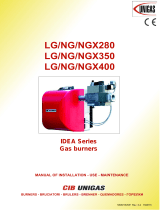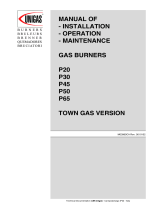
1 20137240
Contents
1 Declaration.................................................................................................................................................................................. 3
2 Information and general warnings............................................................................................................................................ 4
2.1 Information about the instruction manual .................................................................................................................... 4
2.1.1 Introduction.................................................................................................................................................................. 4
2.1.2 General dangers.......................................................................................................................................................... 4
2.1.3 Other symbols ............................................................................................................................................................. 4
2.1.4 Delivery of the system and the instruction manual...................................................................................................... 5
2.2 Guarantee and responsibility....................................................................................................................................... 5
3 Safety and prevention................................................................................................................................................................ 6
3.1 Background ................................................................................................................................................................. 6
3.2 Personnel training ....................................................................................................................................................... 6
4 Technical description of the burner ......................................................................................................................................... 7
4.1 Burner designation ...................................................................................................................................................... 7
4.2 Models available.......................................................................................................................................................... 7
4.3 Technical data............................................................................................................................................................. 8
4.4 Electrical data.............................................................................................................................................................. 8
4.5 Maximum dimensions.................................................................................................................................................. 9
4.6 Burner equipment........................................................................................................................................................ 9
4.7 Burner description ..................................................................................................................................................... 10
4.8 Firing rate (EN 267)................................................................................................................................................... 11
4.8.1 Commercial boilers.................................................................................................................................................... 11
4.8.2 Test boiler.................................................................................................................................................................. 11
4.9 Electrical control box ................................................................................................................................................. 12
5 Installation ................................................................................................................................................................................ 13
5.1 Notes on safety for the installation ............................................................................................................................ 13
5.2 Instructions to avoid burnout or bad combustion of the burner ................................................................................. 13
5.3 Handling .................................................................................................................................................................... 13
5.4 Preliminary checks .................................................................................................................................................... 14
5.5 Operating position ..................................................................................................................................................... 14
5.6 Securing the burner to the boiler............................................................................................................................... 15
5.7 Adjusting the choke................................................................................................................................................... 16
5.8 Combustion head adjustment.................................................................................................................................... 16
5.9 Air damper and 1st stage and 2nd stage pressure pump adjustment....................................................................... 17
5.9.1 1st stage adjustment ................................................................................................................................................. 17
5.9.2 2nd stage adjustment................................................................................................................................................ 17
5.10 Flame sensor adjustment.......................................................................................................................................... 17
5.11 Electrodes setting...................................................................................................................................................... 18
5.12 Maintenance position ................................................................................................................................................ 19
5.13 Hydraulic systems ..................................................................................................................................................... 20
5.13.1 Combustion supply.................................................................................................................................................... 20
5.13.2 Pump ..............................................................................................................................................................................................................................................................................................20
5.13.3 Pressurised one-pipe systems .................................................................................................................................. 21
5.13.4 Priming pump ............................................................................................................................................................ 21
6 Start-up, calibration and operation of the burner ................................................................................................................. 22
6.1 Notes on safety for the first start-up .......................................................................................................................... 22
6.2 Combustion adjustment............................................................................................................................................. 22
6.3 Recommended nozzles............................................................................................................................................. 23
6.4 Electrical system ....................................................................................................................................................... 24
6.5 Electrical diagram...................................................................................................................................................... 25
6.6 Operating programme ............................................................................................................................................... 26
6.7 Table of times............................................................................................................................................................ 27






















